#wildlife rehab
Text
Wildlife rescue organisations here have very intense politics. Like, if you criticize any organisations’ practices you can end up being “locked out” of even unpaid positions in all of them. Which is why this is going safely under a username and not anywhere near my actual one. But it’s so frustrating watching everyone making the same mistakes over and over again.
So some baby animal can’t be released, and it’s decided that they will be used as an education/ ambassador animal. Because of this, they don’t need to be raised to avoid humans. But some people think that this means they should be treated like human children. One organisation literally started splitting up captive-born joeys from wild but un-release-able kangaroos specifically to raise so that when they grew up they would “think they were human”. And for the first year or two it goes great. They want to snuggle with everyone who will look at them, they play with people, and they are just unbearably cute. And people aww about it and say that they really do think they’re human.
When they start to reach sexual maturity, they start “acting up”. People get kicked and scratched and they start to realise that their “child” isn’t acting so snuggly anymore, and they get angry. And the kangaroos have no fucking idea why, because they can’t know that they’re play wrestling is strong enough to hurt us. Because it turns out they don’t think they’re human, but they certainly seem to think we’re kangaroos.
And by the time they’re old enough to start fighting for real, it’s already too late to do anything about it. You can’t let visitors anywhere near them for safety reasons. 90% of the staff and volunteers won’t go in to clean the enclosures, and a lot of them still blame the animals. Some animals are so risky to work with that feeding them takes two people in the enclosure and one person acting as a “spotter”. There is no PPE for this, so people end up using plastic buckets as shields.
Anyway I’m mostly just yelling at the void, but if anyone reading this was wondering why a lot of zoos and wildlife rescues don’t cuddle the baby animals. it’s because of this sort of thing. There are a lot of really good ways to make sure baby animals feel comfortable and safe, but handling them too much usually either scares them, or means that they could seriously injure someone down the track.
It’s also why so many people who’ve worked with animals are so strongly against people owning certain types of exotic pets. If someone is telling you not to get a pet serval or kangaroo or whatever else people are keeping in their living rooms, there’s a good chance they’re trying to stop you getting mauled.
#What does being kicked by a kangaroo feel like?#Slightly less enjoyable than being hit by a cyclist#just to be clear the kangaroos aren't bad#they're just trying to play half the time#but they're so strong that even playing can become dangerous#animal welfare#animal cruelty#exotic pets#wildlife rehab
3K notes
·
View notes
Text
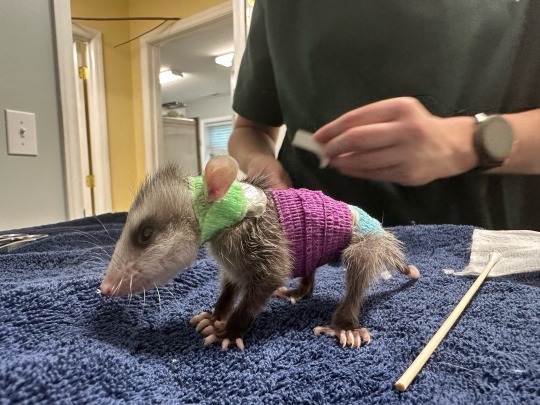
Little guy kept yanking his bandages off, so they needed some reinforcement.
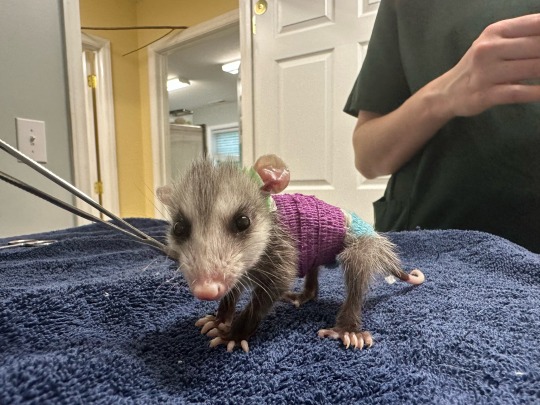
(This is a patient in the process of rehabilitation. She was admitted since her mother , her siblings , as well as herself was attacked by a dog. She has multiple puncture wounds , otherwise she is doing well!)
2K notes
·
View notes
Text
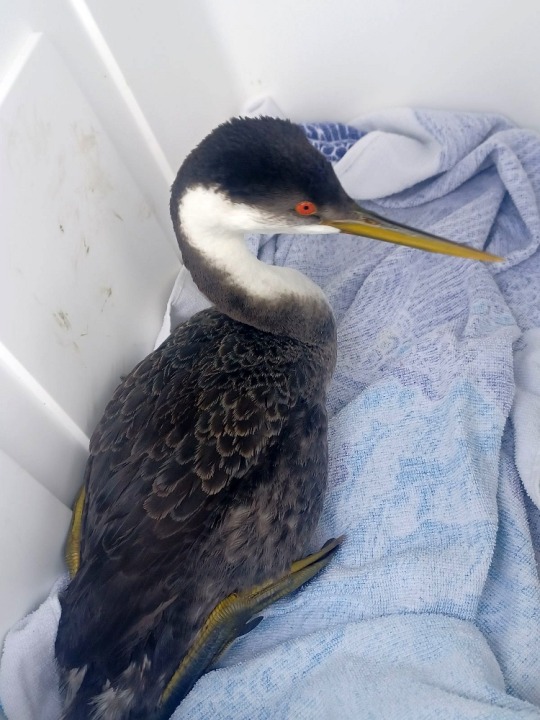
Today is apparently ANGRY STABBY BIRB DAY.
I was taking a walk on the boardwalk out near Bolstadt in Long Beach, when I came across this western grebe (Aechmophorus occidentalis) stranded on the path ahead of me. It looked alert and uninjured, so chances were just that it couldn't take flight off of the hard surface, but I called Peninsula Wild Care anyway to see if they wanted to bring it in for a checkup.
They quickly coordinated a couple of volunteers to meet me nearby, and I needed to get the grebe out of the way since a lot of people walk their dogs there and not all of them are on leashes. I figured okay, this is a relatively small bird, not as big as the muscovies I've carted around on the farm, and it seems calm, right?
NOPE. As I tried to gently reach for the grebe it turned from a calm, if confused pile of feathers on the decking to Stabby McStabberson, and I very nearly got jabbed and nipped a few times by a long, pointy beak attached to a surprisingly agile and very much NOT happy bird. I ended up having to take my hoodie off and dropping it over the entire grebe, and only when the lights were out could I bundle it up and carry it over to the meeting place.
Since it was pretty energetic, not obviously sick or injured, and its body condition felt decent (at least through the hoodie) I'm hoping it's going to get released soon enough after a checkup and a nice meal of fish. Many waterbirds have a lot of trouble taking off from hard surfaces because their feet are so far back on their bodies--which is great for swimming and water takeoffs, but not so helpful on land. If the bird had stayed stranded there they could have been injured or killed by another animal, or ended up dehydrated.
So let's hear it for Stabby the Angry Grebe, and wish them a good release back into the wild!
#grebe#western grebe#birds#birbs#birdblr#wildlife#animals#dinosaurs#avian#avian dinosaurs#Washington#Pacific Northwest#PNW#animal rescue#animal rehab#wildlife rehab#ecology#nature#conservation#migratory birds
845 notes
·
View notes
Photo
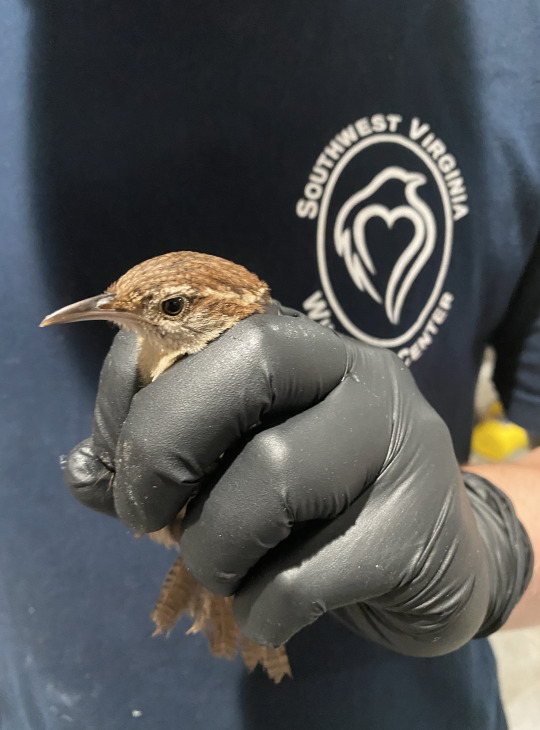

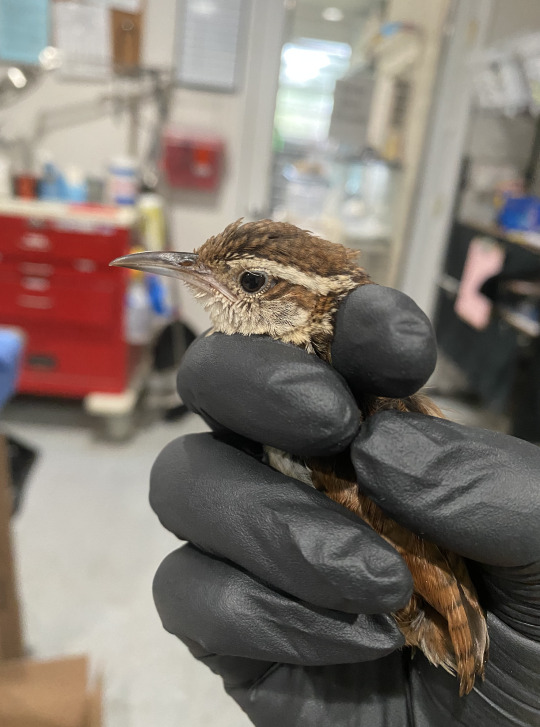
No, these are not photos of the same bird. All three of these Carolina Wrens were admitted to the Center in a single afternoon from different people for the same reason... all of them were caught by cats. These wrens are only a small fraction of the animals we admit every year that are caught by cats—all manner of birds, opossums, rabbits, squirrels, lizards, snakes, and even bats are injured by people's cats every year. Domestic and feral cats are NOT a natural fixture of North America's landscape nor do they replace the role of native predators. Cats are wonderful pets (most of the staff at the Center have indoor cats themselves!) but they are pets, not wildlife. It is cruel to let them out without supervision — we are sure everyone has seen dead pet cats on the side of the road in their lifetimes. And that is just one of the many dangers outdoor cats face.
The impact free-roaming cats have on wildlife is astronomical. Cats have been the cause of extinction for at least 63 species and are indirectly killing dolphins and whales because of parasites cats carry are washing into the ocean and infecting them. It is possible to love cats and love wildlife at the same time — but we are not going to find a good solution until both side work together to reduce the number of cats that are left to free roam or are abandoned outdoors.
We know it is complicated and emotional subject, but it is difficult to remain neutral when day in and day out we see the impact of what cats do on our natural resources. One of these wrens died but the other two are still receiving treatment. Please, please keep your cats inside — for the cat's sake, and for nature's sake as well.
4K notes
·
View notes
Text
A plan is now in motion to airlift the 2-year-old orphaned orca calf trapped in a Canadian lagoon following the death of its mother to a sea pen, in hopes of releasing it when its family (a known pod of Bigg’s transient orcas) pass by. This is similar to what was done with Northern Resident orca “Springer,” who was successfully released and has gone on to live a normal wild life (even raising two calves!) Best of luck to this baby and everyone involved!
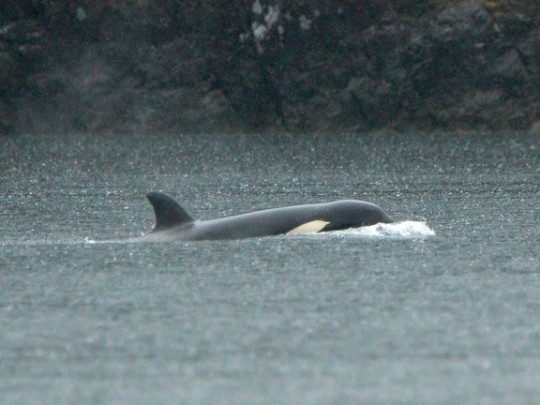
138 notes
·
View notes
Text
Lil bat crunching a lil worm.
Note: I'm a wildlife rehabber volunteer and everything I do is under supervision. Like feeding this bat.
215 notes
·
View notes
Text
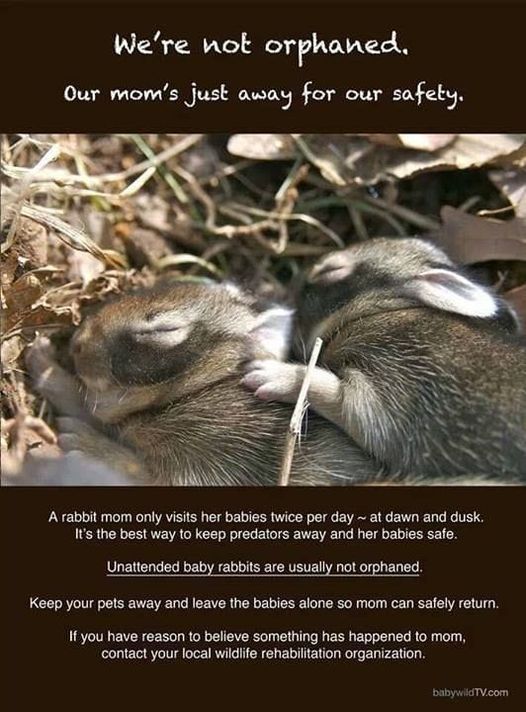
#rabbit#lagomorph#mammal#animals#nature#wildlife rehab#animal rehabilitation#animal welfare#science#wildlife biology
171 notes
·
View notes
Text
Okay, this is…way outside of my usual.
First of all, animal tax for taking your time (more photos further down I can’t format worth anything lol)
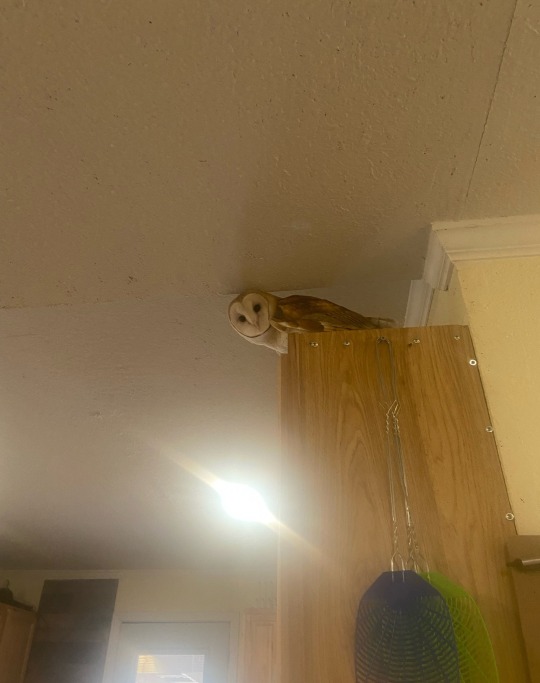
I volunteer with a local wildlife rehabilitation center. The only state, federal, and USDA licensed one in the upper 26 counties of the Texas Panhandle, although we have cared for animals from all over the state. We’ve had everything from half-tamed bengal cats come in from a hoarder’s house to a million and one orphaned starlings in our doors.
There’s always a lot of animals, no matter what, because unfortunately the education towards wildlife in this area is exceedingly poor and most people are either afraid of most animals or see them as nothing more than pests. We’ve had a fair number of animals shot, poisoned, trapped, the parents killed and then the land/homeowner finds the nest of babies…the list goes on.
To combat this, we have always pushed education. We have programs all across the area, we go to schools and churches and scout groups. We’re currently working on building an education building, both to give our educational ambassadors larger and nicer habitats to live in and to have a place to hold events for the community. As the founder of the center always says, “You can’t love what you don’t know”.
This building is by no means cheap. We’re getting close to having it fully funded, but we’re short by several thousand dollars.
Currently, we are having our biggest donation drive of the year, and our goal is to try to have most of the education building paid off from this. We’re also having a bit of a friendly competition among the volunteers to see who can get the most donations.
The best part of this is no matter how small the donation may be, we have donors who are going to amplify the donations. So even if you only give a small amount, it will be worth a lot more!

To donate, go here.
Thank you in advance to everyone who gives or reblogs to spread this!
The promised animal tax:
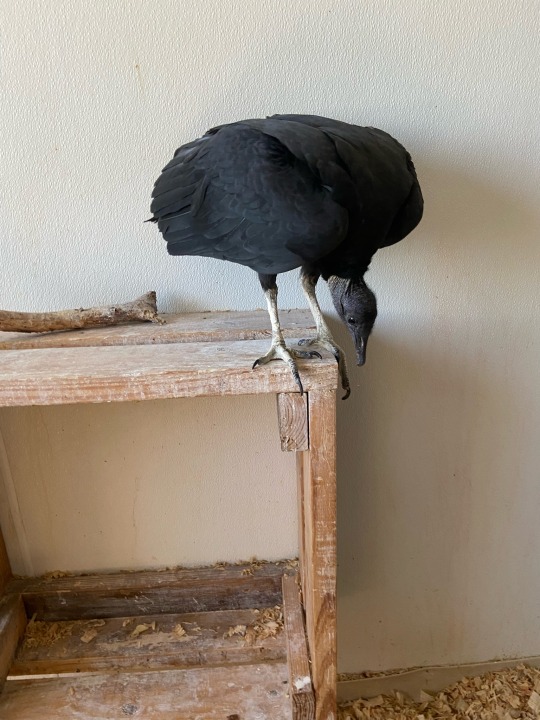
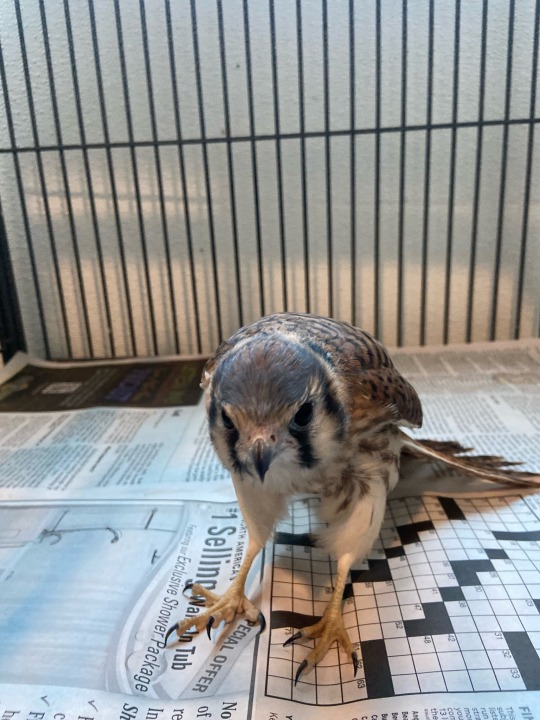
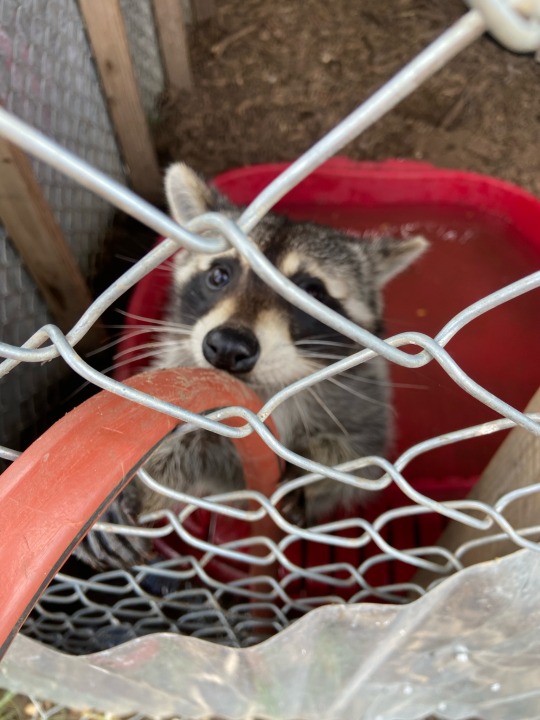

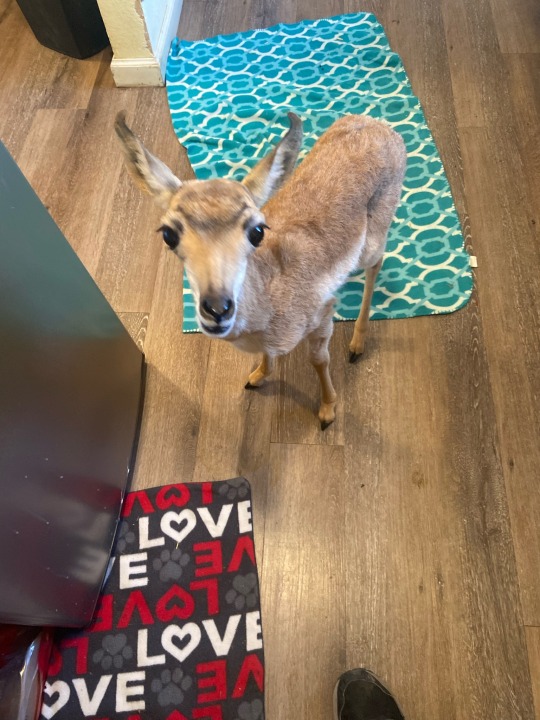
#cute animals#wildlife rehab#wildlife#wild animals#wildlife rescue#animals#raccoon#owl#pronghorn#vultures#vulture#black vulture#barn owl#fox#grey fox#gray fox
78 notes
·
View notes
Text
its not nesting season yet in most of the northern hemisphere but i just saw someone spreading misinfo on a post so PSA that birds don't reject young that have been touched by humans. thats a myth made and upheld by parents who dont want their kids touching birds (there are actually very few diseases humans can get from birds, and bird lice cant live on humans)
birds dont recognize their young by smell (most birds have similar sense of smell to humans, if not worse), and even if the parents see a human handling their young, theyll come back to check on the babies after the humans have left.
so if you happen to find a nestling (young baby bird that should still be in the nest. eyes often closed, usually cant stand up, feathers not all in. examples under this text section), and you know where its nest is, its totally safe to pick it up and put it back in

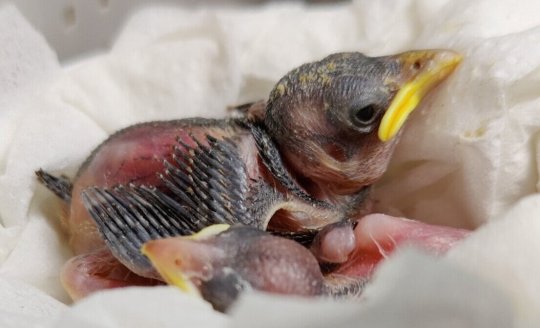
however, if you find fledgeling (older baby bird. feathered by still has some fluff, alert but just seems to be sitting by itself and not moving. ex: the guys below), youll probably want to leave it alone. Theyre supposed to be out of the nest and are still being fed by parents, they just tend to sit still for the first couple days until they learn how to fly. Unless it's injured or in immediate danger (cats, cars, etc) it should be left alone so its parents can continue guiding it
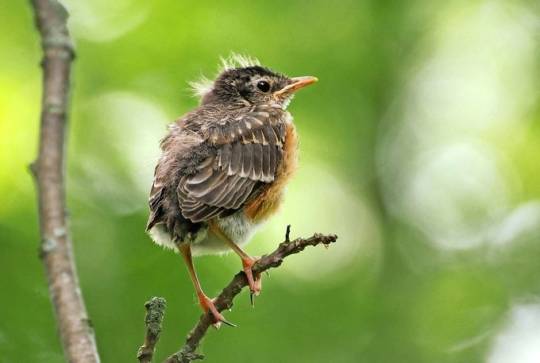
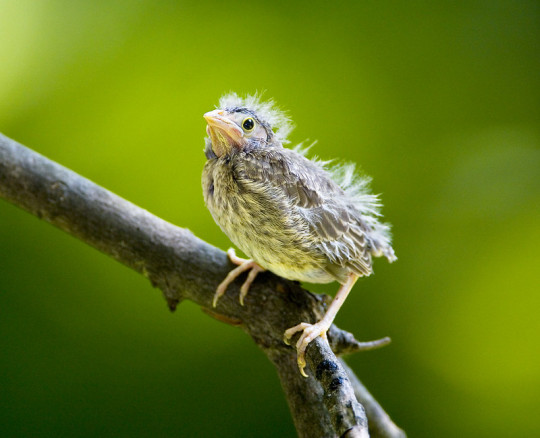
if you're not sure whether a bird is injured or needs help, or if you know it needs help but arent sure what to do, you should contact a local wildlife rehabber and get their advice, and theyll be able to take the bird in if it needs medial attention.
A lot of countries have registered rehabbers' contact info listed somewhere on their wildlife department's website, and if youre in the US, ahnow.org is a good site to quickly find rehabbers and rehab centers in your area (works for animals that arent birds also). If you're in a country or area without access to rehabbers, you may be able to ask a vet for advice and assistance as well (I've also seen people get pretty decent direction from r/whatsthisbird on what to do in certain areas without rehabbers or vets, so that may also be a helpful, if possibly last resort, supplement. At the very least they can tell you what bird you're dealing with)
Additional note that a lot of rehabbers and rehab centers are willing to have someone drive out to where you are if youre unable to drop off an animal yourself, so that's something worth asking about if transportation is an issue for you
59 notes
·
View notes
Text
Also if you find a wild animal and are sure it’s in need of rehabilitation (after asking an educated rehabbed or the like), still don’t feed it! I can’t tell you how many times we’ve had people call in and explain the situation while mentioning that they fed it. Of course they had good intentions, but that doesn’t always work out.
On top of not feeding wild animals in general to prevent risk of habituation (and please never look it up and try to feed it on your own via some random website), you also shouldn’t feed them because allergies are a thing too, as well as choking! We had a pair of baby squirrels come in and they’re feet were purple. Purple. Surprise, that’s not how it’s supposed to be! I talked with the person who found the squirrels and they said they had read to feed it goats milk, which it ended up being allergic to.
It’s best to leave it up to people that know what they’re doing. We see you trying to help! Thank you so much for your interest in saving animals, but there’s only so much you can do.
#wildlife rehab#wildlife rehabilitation#wildlife#tw animal injury#I think?#also don’t feel bad if an animal dies while you’re trying to transport it#sometimes that just happens#keep your cats inside and you’re usually good#you did the best you could and we see you!
150 notes
·
View notes
Text
Pray with me that these babies make it through the night 🙏🐦⬛✨️they're going to the rehabilitation center tomorrow! For now they are eepy 🥹😴

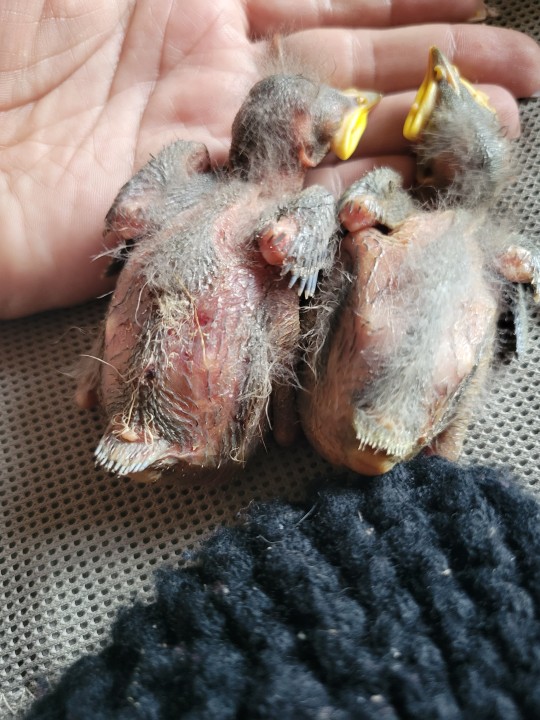
14 notes
·
View notes
Photo

“Popcorn is an opossum rescued two nights ago in rough shape and really struggling to survive in this weather. Did you know it’s not uncommon for rehabbers to be able to handle and even hold a wild opossum? They are so peaceful and docile in nature and are some of the most amazing creatures we have worked with.
While we are not recommending you attempt to pick up any wild opossum you come across, we would love to spread the true facts about these awesome guys and put a stop to the common misconceptions about them that often result in unnecessary cruelty. Here are just ten amazing facts about opossums you all should know!
1. They're Not Aggressive
Even when confronted with a predator, they will use the infamous "playing possum" technique to appear dead and avoid an actual brawl.They can stay zoned out for hours, emitting a foul odor in order to further keep any bad guys at bay, but they'll never outright attack, even if they're baring their teeth.
2. They Rarely Have Rabies
Unlike most other wild animals, possums are nearly completely immune to contracting rabies or passing it along. This is due to their natural body temperature being too low to maintain hosting the virus.
3. They Kill Thousands Of Ticks
According to stats reported by the National Wildlife Federation, a single possum can potentially eliminate 4,000 ticks in one week thanks to their extreme self-grooming methods (either crushing or consuming the ticks burrowing in their fur).They also aren't susceptible to Lyme disease and therefore can protect humans from contracting it, as they rid an area of the real pests.
4. They Won't Destroy Your Lawn Or Property
Unlike other nocturnal animals creeping around neighborhoods, possums won't destroy your lawn or property. If you happen to see one wander into your garage (a popular spot to see them pop up), and don’t want to share your space, simply leave a door open and remove any food that might have drawn them in. They'll eventually mosey on out without making a fuss.
5. They're True Survivors
They've been around longer than any other mammal. Possums are often called "living fossils" because they've been able to survive on our planet for millions of years — over 70 million, to be exact, which really shows their ability to overcome adversity.
6. They Help With Waste Management
They are not picky eaters. If it's edible, they'll eat it. Including commonly dining on animals struck by vehicles on the road (bones and all), which scientists refer to as "carrion."This basically makes them nature's most efficient waste-management team and cleanup crew.
7. They're The Only Marsupials Indigenous To North America
You have to admit, it would be a shame if Australia were the only home to marsupials! Plus, it makes possums even more of a unique part of our natural environment.
8. They Get Rid Of Garden Pests
They aren’t picky eaters when it comes to troublesome garden pests like slugs, beetles, and cockroaches, but they will leave the flowers or veggies you’re growing undisturbed.
9. They May Be The Key To Battling Venomous Snake Bites
The venom of rattlesnakes, cottonmouths, and other dangerous slithery snakes that might be hiding in your yard has no effect on possums.Researchers have been looking into whether they can find the toxin-neutralizing strain in their blood, which could potentially be used to treat humans who have been struck by poisonous snakes.
10. They're Actually Quite Smart
Possums tested with a higher intelligence than more domestic animals like rabbits, dogs, and cats — particularly when it came to finding good food and remembering exactly where it was to go back for more.”
By Becky Zielinski
ABC Wildlife Rehab, Inc.
585 notes
·
View notes
Photo

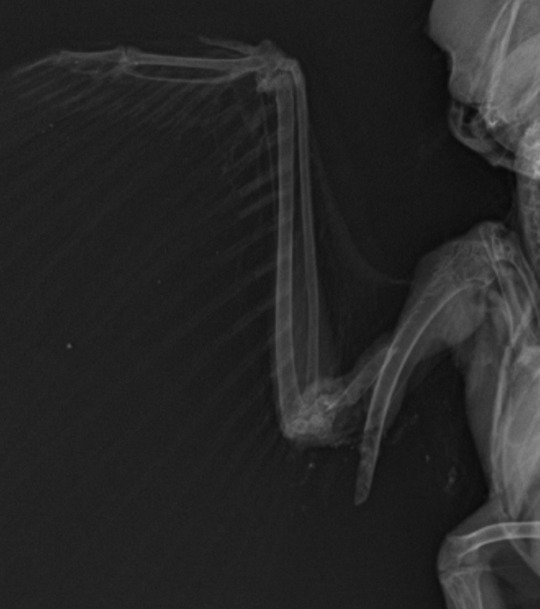
This is why you don’t keep wildlife, folks. This baby Eastern Screech-Owl was rescued from Floyd after being found and kept by someone for weeks and was encouraged by others online to keep this bird rather than take it to a rehabber. Sadly, this little owlet had a badly fractured wing — this injury could have been surgically fixable if the bird had been brought to us when it was found. However, because the bird had been kept from medical attention for so long, the bone was dead and there was no longer a way to fix this very painful wing injury.
People, we know wild animals are cute, cool, and getting the chance to be with one up close is an amazing and unforgettable experience. We know it is tempting to keep them and take it on yourself. We all think we are capable and that we know what’s best — it is just human nature. But the reason why we ask people to bring wildlife to us is not out of greed or because we feel we know more than you, but because every week we see what happens when people try to take matters in to their own hands. Imagine what it is like to receive animals that you know you could have saved if people had brought the animal to you when it was healthy. It’s hard to keep a straight face some days.
Call us. We’re here to help you. Don’t let your ego get in the way of what is right for the animal. Without our existence, we know thousands more would needlessly suffer because of people DYI-ing rehab at home.
Be a hero. Make the call even if you don’t want to. A life may depend on it.
#eastern screech owl#owl#owlet#bird#birds#wildlife#wildlife rehab#wildlife rescue#raptors#animal death for ts#x ray
3K notes
·
View notes
Note
'pump them full of psychotropic drugs' is a new one for me (posted on a video of orphaned manatees being bottle fed)

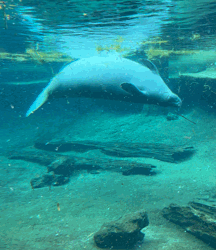
That feeling when the psychotropic drugs kick in 😵💫 joking aside, it’s pretty pathetic that people still insist on believing this.
As for manatees, very, very few of them are permanently non-releasable, especially when compared with cetaceans. SeaWorld has great success releasing orphaned manatee calves, and most of their manatees on public display are orphans or other rescues getting nice and fat prior to release.
#I’ve actually been to their manatee icu#it’s pretty incredible#including the parts that aren’t offered as part of public tours#one of the patients at the time was a pregnant female who was released and gave birth to a healthy calf in the wild#manatees#sirenians#seaworld#wildlife rehab#ara insanity#answered asks#batplushies
101 notes
·
View notes
Text
Can't deal with how cute this great crested grebe chick is.
Note: I am a wildlife rehab volunteer and everything I do is under supervision.
62 notes
·
View notes